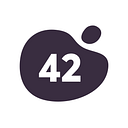Member-only story
A bad UI is like an elephant in a room of blind people.
— Vineet Raj Kapoor
A user interface is a medium through which a human being interacts with a machine or computer.
The goal of user interface design (or UI design) is to produce an interface that makes it easy and enjoyable for the user to carry out their desired task.
For example, it should be straightforward for a customer of a photo-sharing website to upload, organise and share their images.
When done poorly, user interface design can cost companies millions of dollars.
In the case of the large US financial institution, Citibank, a confusing layout on the bank’s debt repayment platform meant a bank employee accidentally sent $500 million to their creditors instead of only their interest payments which totalled $7.8 million. Oops!
Imagine that phone call….
”Hi there, slight problem, I accidentally overpaid our bill by $492.2 million, can we have that money back please?” 😂
As we alluded to earlier in the course, there are many principles to consider when it comes to UI design.
One of the most comprehensive is Jakob Nielsen’s 10 Usability Heuristics which are as follows:
